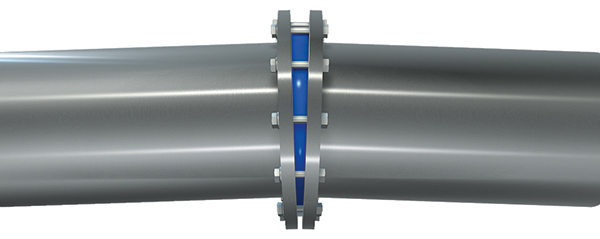Blog
GYLON® Production Process
A comparison to the conventional PTFE gasketing production process shows the difference.
PTFE – PolyTetraFluoroEthylene – is an unbranched, linear, semi-crystalline polymer of fluorine and carbon. Due to its chemical inertness, PTFE is used as a coating where aggressive chemicals occur in industry.
Virgin PTFE has many advantages. Some of them are exceptional chemical resistance, wide temperature range, lowest friction coefficient, low surface energy, non-stick surface properties, no embrittlement of aging and excellent electrical and dielectrical properties.
But it also has several disadvantages. It is very soft and has the tendency to cold flow. PTFE is also called “dead” material because, when compressed, it remains in this state. It is also fragile and surfaces must be smooth and hard.
GYLON® offers a good possibility to use the advantages of PTFE, but due to its production process to eliminate the typical disadvantages – and even to improve the material. GYLON® is a modified and restructured PTFE.
The conventional PTFE gasketing production process compared to the GYLON® production process:
The quality of gasketing materials depends on the know-how of the manufacturer, the manufacturing process, the raw materials, and the technical requirements and needs of the client.
The conventional manufacturing process of skived PTFE runs as follows:
- Mixing of ingredients
- Compression of material
- Sintering process
- Skiving
Mixing of ingredients
You might think that a mixing process is no big deal. That is not true. In comparison to the PTFE mixing process, only the GYLON® process guarantees consistent mixing and even dispersion.

Mixing of PTFE

Mixing of GYLON®
The results of the mixing processes are showing the characteristics and differences.
PTFE mixing result is random and uneven, the filler tends to random particularization. It has relatively low tensile strength. The strength is directed only in one direction. It has poor “cold flow” properties.
GYLON® mixing result shows an oriented particularization. It has an uniform dispersion of fillers, denser polymer structure, omni-directional tensile strength, minimized deformation under load (cold flow), superior bolt torque retention and a wide temperature and chemical resistance.

PTFE mixing result

GYLON® mixing result
Compression of material
PTFE is compressed under pressure. Garlock has developed a patented process for GYLON®. The patented multi-layer construction of the material is the basis for permanent resilience.

Compression of PTFE

Compression of GYLON®
Sintering process
The solid mass of PTFE material is formed by heat without melting it to the point of liquefaction. The GYLON® sintering process follows a strictly controlled rise and fall in predefined temperature, depending on additives for the different styles, and a special technical process.

Sintering of PTFE

Sintering of GYLON®
Skiving
The PTFE skiving is a common cutting process. Plates are cut from material with knives. With GYLON® this is combined with the sintering process. The GYLON® plates, which are already homogeneously formed during the compression process, slide out of the sintering device and thus retain their homogeneous and consistent structure.

Skiving PTFE

GYLON® process
The results of the different production processes
Conventional filled PTFE processing is a well known process resulting in physical and chemical weakness. The GYLON® process is a patented Garlock manufacturing technique with international acceptance for use in challenging applications. Why? Here is the answer:

PTFE – fluctuating strength

GYLON® – homogenous strength
GYLON® gaskets offer homogenous properties under every condition.

PTFE under heavy and uneven load – no reliable sealing

GYLON® under heavy and uneven load – reliably leakproof
GYLON® eliminates cold flow problems present in the past.

PTFE cold flow

GYLON® prevents cold flow
GYLON® offers many advantages resulting, among others, from its composition and manufacturing process. GYLON® has an excellent chemical resistance and minimal cold flow. It can be used in high pressure and temperature combinations. The temperature range is from -268 °C to +260 °C. It offers high resilience and excellent dimensional stability under thermal stress. It has good electrical insulating properties, high wear, abrasion, weather and UV resistance.
In order to meet the requirements of special applications, Garlock has subjected their materials to special tests. Certificates and detailed records on the following tests are available upon request for applicable GYLON® styles: BAM (Federal Institute for Materials Research and Testing), TA-Luft (including blow-out proof certificate), FDA, USP Class VI, EN 1935/2004, DIN EN 13555 characteristic up to 80 bar. Additional certificates for individual styles are available upon request.
Falkenweg 1
41468 Neuss
Germany
+49 2131 349-0
garlockgmbh @ garlock.com
© 2024 Garlock GmbH, Germany
Garlock Global Website
www.garlock.com
Career Site Europe
https://www.garlock-karriere.de/en
